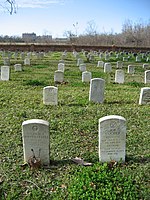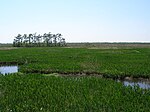Andrew Jackson Fundamental Magnet High School
Public middle schools in LouisianaSchools in St. Bernard Parish, Louisiana
Andrew Jackson Fundamental Magnet High School, commonly nicknamed "A.J.", "Andrew Jackson", or "Andrew Jackson High School", was a public magnet high school in Chalmette in the area of St. Bernard Parish, Louisiana, United States. It is a part of St. Bernard Parish Public Schools. Andrew Jackson was turned into an elementary school in 2010 then later into a middle school teaching grades 6-8. Currently still a middle school.
Excerpt from the Wikipedia article Andrew Jackson Fundamental Magnet High School (License: CC BY-SA 3.0, Authors).Andrew Jackson Fundamental Magnet High School
Jean Lafitte Parkway,
Geographical coordinates (GPS) Address Nearby Places Show on map
Geographical coordinates (GPS)
| Latitude | Longitude |
|---|---|
| N 29.95011 ° | E -89.98371 ° |
Address
Andrew Jackson Elementary School
Jean Lafitte Parkway
70043
Louisiana, United States
Open on Google Maps








